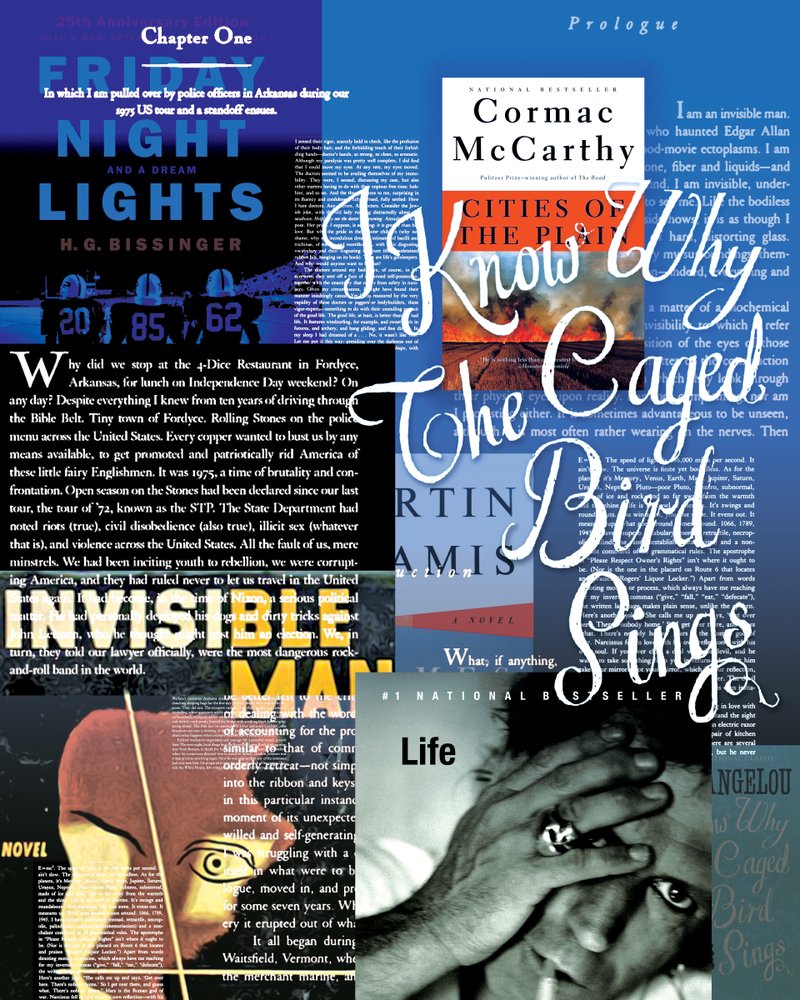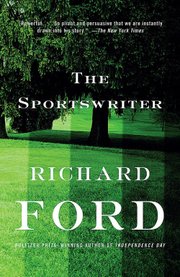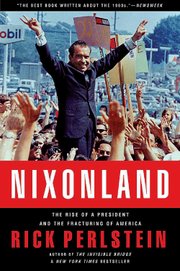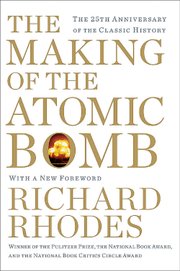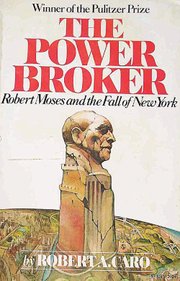For reasons unknown, summer book reading lists get all the love. The headlines start screaming in May -- maybe even April:
"19 summer books that will keep you up all night reading" -- NPR
"Hot for a summer read?" -- The Boston Globe
"Books to Breeze Through This Summer" -- The New York Times
Fall and winter reading lists? Well, those are not really a thing, but then summer has always outshone the cooler seasons.
Well, not anymore. Here we present a fall and winter reading list, and for good reason. By September, the excitement has wheezed out of those breezy beach reads, and fall and winter is the time for books of substance, of great heft and importance, of literary grandness. These are the project books, books for when the days get shorter, the cold gets bolder and working through a weighty novel or trilogy of books becomes easier because there's nothing much else to do.
What follows are a few ideas of English-language works for reading during the fall and winter months, spanning from Frank Bascombe and Jane Eyre to Marcus Dupree.
NOVELS
There are certainly long novels out there -- Don Quixote by Miguel de Cervantes and War and Peace by Leo Tolstoy come to mind -- but here are suggestions beyond singular long novels.
The Frank Bascombe Trilogy by Richard Ford
The Mississippi born Ford has written three novels about Bascombe, a sportswriter turned real estate agent in New Jersey who is moving from his late 30s to late middle age. (A fourth book, Let Me Be Frank With You, is a collection of four novellas about Bascombe set against the backdrop of Hurricane Sandy.) The first, The Sportswriter, is my favorite of the trilogy, while the second, Independence Day, won the Pulitzer Prize and PEN/Faulkner Award for Fiction in 1996. The third in the trilogy, The Lay of the Land, arrived in 2006. Read all three novels and you'll go through about 1,330 pages on the turbulence of the American dream by one of the greatest writers ever.
The Border Trilogy by Cormac McCarthy
McCarthy's best novel -- in my humble opinion -- is Suttree, which is dark while also humorous. Then I love the brevity and craftsmanship of No Country for Old Men, and then McCarthy's masterpiece, Blood Meridian. But McCarthy's Border Trilogy -- 1992's All the Pretty Horses, 1994's The Crossing and 1998's Cities of the Plain (1998) -- mixes Western fiction with romance and adventure in a writing style that is pure brilliance. Reading all three -- about 1,000 pages in all -- is a worthy pastime for a long winter.
Money, London Fields and Time's Arrow by Martin Amis
This is not a trilogy as none of the three novels is connected, but Amis is one of my favorite writers, and these three novels show him at the height of his writing prowess. (Some refer to his Money, London Fields and The Information as his "London Trilogy." I don't.) Published in 1984, Money is the tale of John Self, a British TV commercial director invited to New York to direct his first film who completely indulges in a hedonistic lifestyle. Money, sex, drugs and his own awfulness -- those are the things that power Self to the brink of destruction. London Fields (1989) is a murder mystery that is darkly comedic, and Time's Arrow delivers the life story of a Nazi doctor of death during the Holocaust in reverse chronology, starting from his "birth" as German-born American doctor Tod Friendly.
THE CLASSICS
Between 1811, with Sense and Sensibility, and 1815, with Emma, Jane Austen published four of the greatest novels ever, including Pride and Prejudice in 1813 and Mansfield Park in 1814. When's the last time you read any of these? Perhaps this fall and winter is the time to revisit classic works of literature.
The works of Austen are a good place to start -- and are long enough (the four books together are about 1,820 pages) to keep even the quickest reader involved over the fall and winter months -- but so are works by the Bronte sisters: Emily Bronte's Wuthering Heights, Charlotte Bronte's Jane Eyre and Anne Bronte's Tenant of Wildfell Hall (which all three combined mean about 1,400 pages).
Another loosely bound collection of authors and works for fall and winter reading would be revisiting a college class I took on modern black literature: Ralph Ellison's Invisible Man, Richard Wright's Native Son, Alice Walker's The Color Purple and Maya Angelou's I Know Why the Caged Bird Sings. Each of these is a staggering work of beauty, cruelty, kindness and darkness that every lover of words should read.
HISTORY
The Power Broker by Robert Caro
At more than 1,300 pages, this biography takes time to read, but the Pulitzer winner is worth it, with its tale of Robert Moses, a man never elected to public office but who was known as the master builder of New York, who created public beaches and parks, roads and bridges, and hardly anyone or anything stood in his way. Caro also is the author of the four-part Lyndon B. Johnson biography, The Years of Lyndon Johnson, with a fifth and final volume in development now. Those four volumes -- more than 3,500 pages -- sit on my bookshelves at home, awaiting a nuclear winter.
The Civil War: A Narrative by Shelby Foote
Speaking of reads for a nuclear winter, I wouldn't recommend reading all three parts of Foote's Civil War history back to back to back, considering the three volumes -- Fort Sumter to Perryville, Fredericksburg to Meridian and Red River to Appomattox -- encompass around 1.5 million words over close to 3,000 pages. I read the first two volumes over one long winter, but waited three years before reading Red River to Appomattox, and read James M. McPherson's Battle Cry of Freedom: The Civil War Era, a Pulitzer-winning, one-volume work, in between so I could remember where I was before finishing Foote.
Other trilogies or history books of note that will keep a reader busy include Parting the Waters: America in the King Years by Taylor Branch, about Martin Luther King Jr. and the civil rights movement; Rick Atkinson's The Liberation Trilogy, about the American role in the liberation of Europe in World War II; The Making of the Atomic Bomb by Richard Rhodes (a phenomenal read; followed by three other books by Rhodes about the nuclear age); Richard J. Evans' The Third Reich Trilogy, about the rise and fall of Nazi Germany; and Rick Perlstein's chronicles of the rise of modern American conservatism, told in three books, including the excellent Nixonland, which details Richard Nixon coming to power.
MUSIC
Life by Keith Richards
This autobiography -- which kicks off in Fordyce over the 1975 Fourth of July weekend -- is not just one of the greatest music books I've ever devoured, but also just a great read. I mean, it's Keith Richards, for Pete's sake. A man who should've been dead a dozen times over should certainly have a life's story to tell and Richards doesn't disappoint with these 576 pages.
Last Train to Memphis and Careless Love by Peter Guralnick
On the other end of the survivor's spectrum is the story of Elvis Presley, told by Peter Guralnick, a music writer whose focuses on early rock 'n' roll (he has written about Robert Johnson, early American roots music, Sam Phillips and Sam Cooke among others) could be their own fall and winter reading project. Still, Guralnick's two-part biography of Presley -- coming in at 1,340 pages -- finds the triumph and the tragedy in Presley's life, from its beginnings to the height of fame and the day it all ended.
SPORTS
Fall and winter also are football season, which in a few weeks will mean football games every night of the week except maybe Tuesday and Wednesday (and even those nights later in the year). But are you really going to watch Central Michigan and Western Michigan play on Wednesday, Nov. 1? Probably not. So instead of watching football, how about reading about football?
Marcus Dupree was a high school running back who was one of the most-talented football players ever, but who flamed out in college and had a short professional career in the USFL and the NFL. Willie Morris' The Courting of Marcus Dupree is the definitive history (around 460 pages) of Dupree's high school and college football career, back when recruiting football players was more like the Wild West. It's a literary ride that starts with Dupree walking out of a gymnasium on a hot September night in 1981 Mississippi but is so much more than just about football.
Friday Night Lights: A Town, a Team, and a Dream -- the book, not the film or TV show (which are both good) -- is likewise about more than football. Buzz Bissinger's story about the 1988 Permian High School Panthers football team from Odessa, Texas, is a critical look at the impact of high school football on a football-crazed community. It's not but about 365 pages long ... but sometimes, even in the fall and winter, you need a brisk read that's not too heavy.
Style on 09/19/2017
